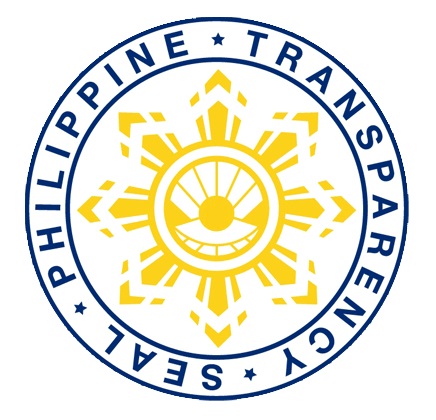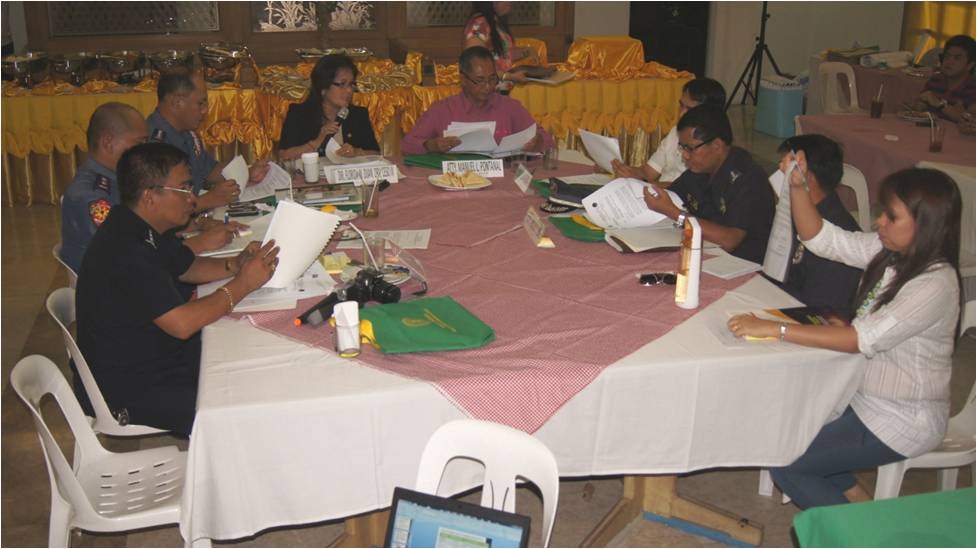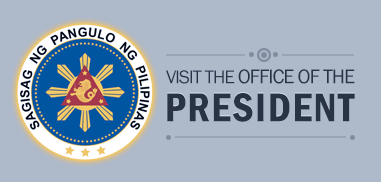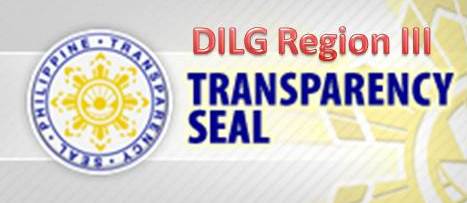- Details
- Category: NEWS AND EVENTS
- Hits: 757
The Local Government of Zamboanga, under the leadership of Mayor Celso L. Lobregat, granted financial assistance in the amount of Php 500,000 each to eighteen (18) LGUs of Central Luzon. Mayor Lobregat extended the financial help to ease the sufferings of the constituents who have been badly affected by the heavy monsoon rains in the region.
Among the LGUs granted with the financial aid are the municipalities of Dinalupihan, Mariveles, Orion and Orani in Bataan; Bocaue, Calumpit, Hagonoy, Obando and Paombong in Bulacan; Macabebe, Masantol, Minalin and Sto. Tomas in Pampanga; Capas, Concepcion and Paniqui in Tarlac; and Iba and San Marcelino in Zambales.
Turn-over of checks was led by DILG Secretary Jesse Robredo and Mayor Lobregat with DILG Region III Regional Director Florida Dijan and concerned Provincial Directors on August 16, 2012 at DILG Central Office in Quezon City. Mayors and other local officials of the aforementioned LGUs personally received the checks.
These 18 LGUs were adversely stricken by flood brought about by the long-week monsoon rains or “Habagat” which also affected many parts of the country.
- Details
- Category: NEWS AND EVENTS
- Hits: 828
 His Excellency President Benigno S. Aquino III visited on August 10, 2012 the flood victims of the monsoon rains in Brgy. Sto. Niño Integrated School, one of the evacuation centers in the City of San Fernando, Pampanga. With him were DILG Secretary Jesse Robredo, DSWD Secretary Dinky Soliman, Presidential Communications and Strategic Development Office Secretary Ricky Carandang, TESDA Director Joel Villanueva, DOE Secretary Jose Rene Almendras and Congressman Sonny Angara.
His Excellency President Benigno S. Aquino III visited on August 10, 2012 the flood victims of the monsoon rains in Brgy. Sto. Niño Integrated School, one of the evacuation centers in the City of San Fernando, Pampanga. With him were DILG Secretary Jesse Robredo, DSWD Secretary Dinky Soliman, Presidential Communications and Strategic Development Office Secretary Ricky Carandang, TESDA Director Joel Villanueva, DOE Secretary Jose Rene Almendras and Congressman Sonny Angara.
President Aquino was received by Gov. Lilia Pineda, Vice Gov. Yeng Guiao, City Mayor Oscar S. Rodriguez, Butil Partylist Rep. Agapito Guanlao, 3rd district rep. Aurelio Gonzales and other local officials of Pampanga. Likewise, DILG RD Florida M. Dijan; DSWD RD Adelina Apostol; PIA RD Robert Baldago; DOH ARD Dr. Edna Abcede and other Regional Directors of different National Government Agencies were also present in the activity.
In his speech, the President said that he has already talked with local officials in the region and have agreed to look into the reason that caused Pampanga River to overflow and resulted to a widespread flooding in the region. He said that one of the interventions would be engineering projects that will put a permanent and lasting solution to the problem. He also assured the flood victims that the government is doing its best to respond to the needs of those affected by the disaster.
President Aquino also led the distribution of relief goods to the first 20 of 105 families in the evacuation center. Each family evacuee received two packs of relief goods (food items), one prepared by the DSWD3 and another from TESDA 3. The food packs contain kilos of rice, canned goods, instant noodles, coffee and bottled water.
During the day, the President also visited some evacuation centers at Paniqui and Capas in Tarlac; Dinalupihan in Bataan; and Obando and Malolos City in Bulacan.
- Details
- Category: NEWS AND EVENTS
- Hits: 1569
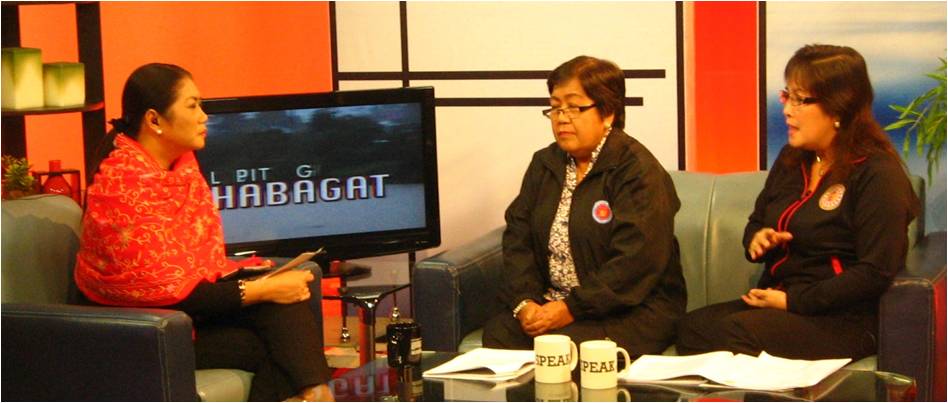
Ms Sonia Soto (left) of CLTV 36 during her live interview with RD Florida Dijan (right) of DILG and ARD Elena Escano (middle) of DBM
Department of the Interior and Local Government III Regional Director Florida M. Dijan was invited as guest at CLTV 36’s special edition entitled “Lupit ng Habagat” yesterday, August 9, 2012. With her in the live interview, hosted by Sonia Soto was Department of Budget and Management III Assistant Regional Director Elena Escaño.
In the midst of this present calamity, which strikes almost the whole of Central Luzon, RD Dijan said that local officials are now more prepared and empowered, the same statement DILG Secretary Jesse Robredo highlighted during the latter’s interview at DZMM.
Through Republic Act 10121 or Disaster Risk Reduction and Management (DRRM) Act of 2010, utilization of DRRM Fund is very clear. “Hindi katulad noong tinatawag pa natin itong calamity fund, hindi malinaw kung saan pwedeng gamitin ang pondo sa disaster”, she said. From the 5% DRRM fund, 70% can be used for preparedness while 30% can be utilized when calamity strikes. Furthermore, RD Dijan said that preparedness involves LGUs’ purchase of equipment for rescue operation such as rubber boats.
Also, part of preparedness is the capacity building of barangay officials and rescue teams being led by the DILG in partnership with the Office of Civil Defense and Department of Environment and Natural Resources. One of the training outputs is their respective CBDRRM Plan. This is also one of the important tasks of DRRM Officers, i.e. to ensure that their respective LGUs have DRRM Plans. According to RD Dijan, to date, 35% of barangays in Central Luzon has DRRM Plans.
The RD also mentioned that nearby LGUs can help each other by utilizing their DRRM fund to purchase equipment. “Pwedeng gamitin at ipahiram ang mga equipment na ito sa kung anong Local Government Unit ang nangangailangan, sapagkat kasama ng empowerment ay ang pagtutulungan ng mga LGUs”, she said.
In times like this, RD Dijan said that Public-Private Partnership (PPP) is being manifested. She took the chance to express her gratitude to those private organizations, local government units within and outside the region, and even individuals who sent rescue teams, relief food as well as those who offered their places to accommodate people who need to be evacuated from their flooded places.
In her final message, the DILG Director informed the public that the DILG, together with other government agencies in Region III are doing all efforts to help those affected by flood. She further added that government employees manning the Operation Centers of different NGAs are working hand in hand in order to address the needs of affected people particularly in the provinces of Bataan, Bulacan and Pampanga, which were declared under state of calamity.


